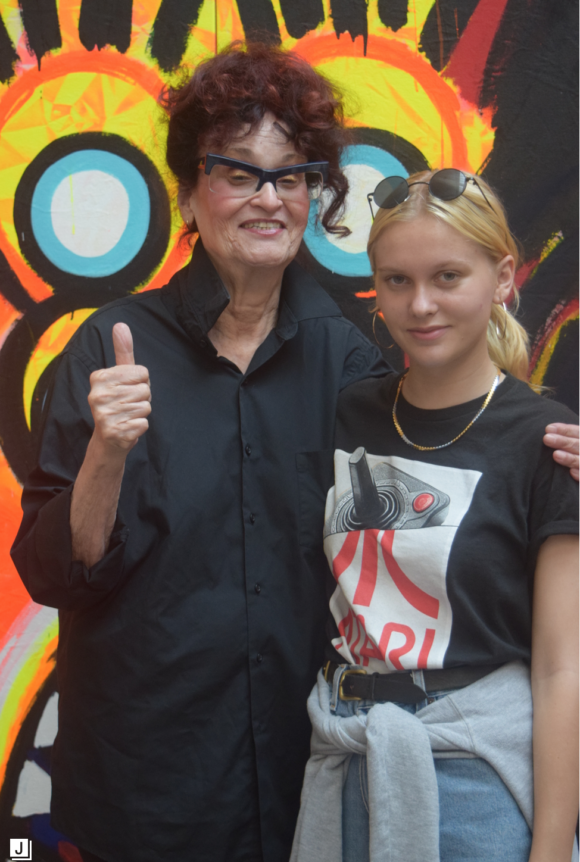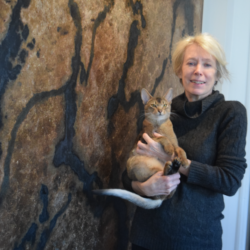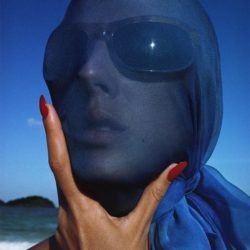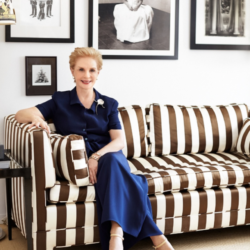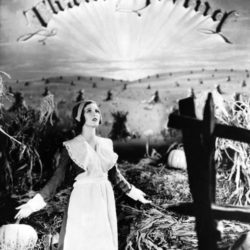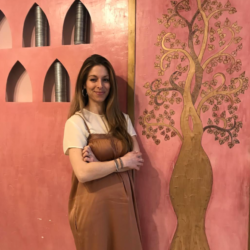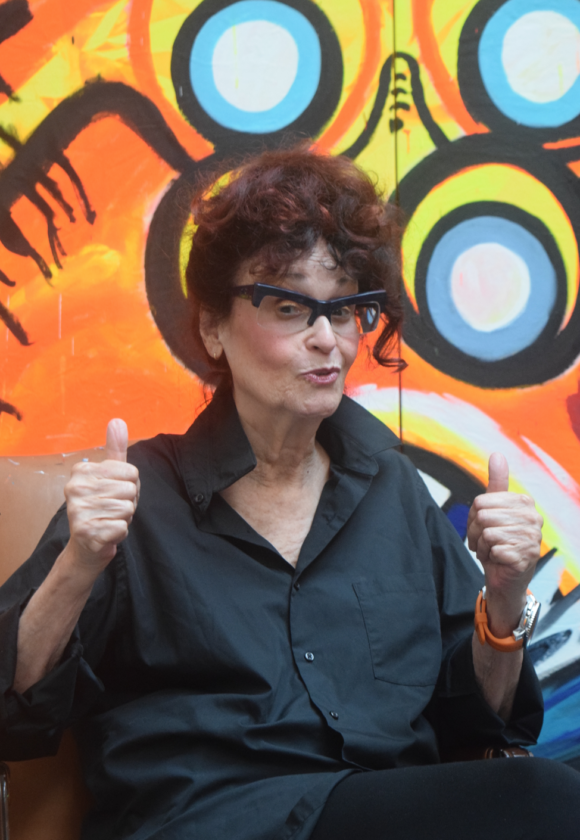
Judith Bernstein
I had the pleasure of visiting the notorious feminist artist, Judith Bernstein, in her temporary studio at The National Academy where she was working on a new series of large-scale paintings in her Death of the Universe series.
In 1967 after earning her MFA at Yale, Judith settled into a live/work studio space in New York’s China Town. She soon discovered that the gatekeepers of the male dominated art scene had no place for an outspoken feminist painter with a penchant for phallic imagery and protest art long before it was a thing. In 1974 a large charcoal drawing of a phallic like screw was censored from a museum show in Philadelphia. Her career stalled, Judith paid the bills by teaching and continued to paint, refusing to subvert the provocative nature of her art. A solo show at The Mitchell Algus Gallery in 2008 finally changed the trajectory of her career or maybe the world had finally caught up to Judith and her unflinching exploration of political protest, male power and corruption. Multiple shows and articles in The New York Times and New York Magazine soon followed. Judith’s career took off on her own terms.
Since the election of Donald J. Trump, Judith Bernstein has been working in overdrive on 13 foot high canvases depicting with visceral precision and wit the stranger than fiction events and dangerous coalitions that have dominated the Trump era. The following are excerpts of my interview with Judith. She’s a fascinating figure whose time has come. Judith’s next show is at the American Academy of Arts and Letters 2019 Invitational Exhibition of Visual Artists at 633 West 155thStreet, New York, March 7thto April 7th.
Jolain Muller I want to start at the beginning because you have such an interesting story.
Judith Bernstein So true, I came from a very small town in New Jersey, a place called Bradley Beach, which is a shore resort near Asbury Park. I went to Penn State as an undergraduate. When I went to Penn State there were actually 3 men to every woman. That shows you how much things have changed. Now I’m 76 Years old, this was in the 1960’s, more than 50 years ago. After I went to Penn State, I went to graduate school at Yale School of Art. At that time it was an all male undergraduate school.
JM Was it hard to get in? I imagine not too many women went to graduate school then.
JB Very few women, the whole trajectory for women was let’s get married, let’s have children. And everyone else by the way was a pariah and they thought oh my god that’s really too bad that you have to go to graduate school.
JM (laughing) Because you didn’t have a man?
JB Exactly what a loser! So I went to Yale, actually to me it was very liberating, it was an art school and I had not gone to an art school. When I was at Penn State it was general, I was in art education. My parents were very middle class, they did not want me to go to school unless I specifically had some training to make a living and rightly so, I understand that. They had no idea of how anyone could make a living at art and neither did I. When I was at Penn State I knew that I wanted to get into the field of art and to make art, it was my passion. I went to Yale, which was an extraordinary school; there were only 3 women in the graduate program. Yale always had women as graduate students, I was not the first one to go but nevertheless there were very few.
JM Can I just back track? How did you even get in? It must have been very competitive as a woman to get into the Yale School of Art.
JB I was very independent. Penn State was under the quarter system, when I was in junior year so I went one summer and I graduated in three years. I had a friend in art education and she wanted to go to Yale for theater so she said oh it looks so great, the school is so beautiful you know you should really try. So I had this portfolio, I sent it and got a full scholarship and it was extraordinary for me.
JM They must have recognized something in you.
JB They recognized that I had independence, that I had a unique voice and a unique visual aesthetic and that’s how I got in. I also needed more time to get myself together and see what I could do with my life, figure things out. I did what I wanted meaning I did artwork that I wanted, the same way I did as an undergraduate.
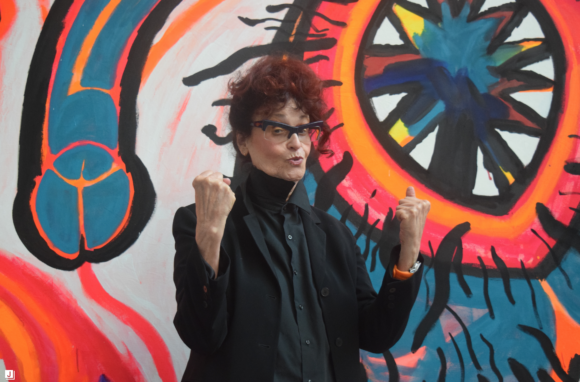
JM What influenced the art you were making while you were at Yale?
JB While I was in Yale I read an article in The New York Times that said Who’s Afraid of Virginia Wolf was a graffiti that was found in the men’s room. That started me thinking, a light bulb went off and I wanted to go into the men’s room at Yale to see what kind of graffiti was there.
JM Did you just sneak into the men’s room?
JB I would have a guy come in with me and stand at the door. I didn’t take that much from what I saw, it was really to get the idea of what it was. I had, for example, a man flies through the air with a big cape who was super cock, this might not be heaven but Peter hangs out here, I made a painting and drawings that were part of this. Then I graduated from that to anti Vietnam because this was a very heavy time for Vietnam and that was because there was a draft, there was a lot of rage, a lot of hostility, a lot of guys did not want to go to war. Why were they going, for what, to get killed? So that’s how I started the Fuck Vietnam Series.
After I graduated I went to New York and that was a bit of a shock because what do you do when you get to New York? There were a lot of women who were in my situation, they had gone to graduate school, I went to Yale but they went to Carnegie Tech and other schools and they wanted to have access to the system, they wanted to exhibit in New York and they were shut out. In New York I found a loft in an advertisement in the Village Voice and though it was somewhat isolating I found a community of women artists there. Lucy Lippart, a critic, had a file of women artists and this was a great thing. Two women got together and then they found two more so four women got together. They were looking for women to be part of a gallery, the first women’s gallery. There was really very little access for women to be in the art world so we started the gallery. When we were trying to figure out a name for the gallery I said T.W.A.T., Twenty Women Artist Together.
JM (laughing) Perfect!
JB I was ahead of my time. And I have to tell you I didn’t take it seriously, it’s not only that they didn’t, I didn’t. But Howardena Pindell said let’s use A.I.R. she was thinking Jane Eyre and we used A.I.R., which is an acronym for Artist In Residence.
Around that time, 1969, I started doing screw drawings, which were a combination of anti war, sexuality and feminism all rolled up into one. They were drawings of screws that were hairy and 9 feet by 30 feet so they had a very big impact. And they infantilized the person in front of it.
JM Can I just add no one was making art like this, you must have been so provocative.
JB That’s exactly right, no one would touch it, and I wasn’t collected. I never went into art thinking that there would be a collection. All the work I’ve done is political and sexual, a combination, a connection.
JM And often times the two collide.
JB And this collided with what I chose to do. I was aghast at inequities in the world that was from my own background, so I had a rage of inequities that was what I addressed. This was a time when you had consciousness raising groups and stuff like that. I did the screw drawings for a long time and they became more hairy and fetishy. This was during a time frame when they were saying that women could have everything. You can’t have everything, that’s just ludicrous; you’re lucky to get something. For a very long period of time, because of the fact that my work was revolutionary and not in the mainstream, galleries didn’t want to show it, I was censored and I was literally censored in 1974 when there was a group show in Philadelphia that was called Focus. This was a big show with about 100 women, women who were starting out like myself or people like Louis Nevelson and Louise Bourgeois who had been in the art world a long period of time.
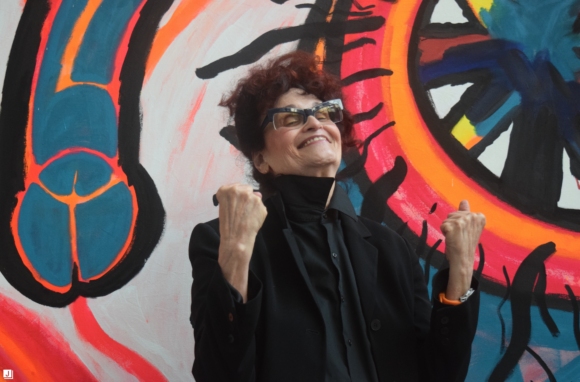
JM So it was an important show?
JB It was a very important show. When they saw my work in Philadelphia they said no way women will be damaged forever. They’re always trying to protect the women by the way. They censored the piece without seeing the piece itself, only photographically. I know there was one publication that had printed the screw that I had horizontal, they printed it vertical. A friend of mine, Agnes Denes, said, well you know guys they always want it up. So they printed it vertically, it must go this way! There was a lot of brouhaha because of the censorship issue. There was a whole group of people that got together and printed a button that said where’s Bernstein. I didn’t go to the opening but I went to the show. I also didn’t want the show to be censored because it was very important to have women show at that period of time to show that women do provocative art and that they do terrific work that should be shown. There was a lot of controversy about it but the show did go on so to speak.
Then later on I was doing work that was against aids and masturbutory pieces. I did one that was similar to Matisse’s Dance that were these dancing cocks similar to the piece at the Museum of Modern Art, the same kind of thing, where are the phalluses in the Dance? They’re right over there in Judy’s work. Then I did The Birth of the Universe series that put women at the center and using women’s rage, and women have a lot of rage. I thought a lot of women would be angry about that but nevertheless in the past when you had vaginal imagery you had it so that it’s very sweet and that’s not the case, women have a lot of rage, they have a lot of anger, they’re entitled to it because they want to be part of the system or they’re unhappy with their lives the way my mother was. I was part of the Guerrilla Girls that had to get together in 1984. There was a painting and drawing show at the Museum of Modern Art, international paintings and sculpture and there were 166-67 in the show and 13 were women and this was not good enough for us.
JM And this was in the eighties?
JB This was not by the way in the turn of the previous century, so women were very angry and that was the start of the Guerrilla Girls. Kynaston McShine who actually curated that show said if someone is not in this show they should really examine their career. So women were not happy with that statement as well as the show and unfortunately the show was not that good but that’s a different issue. I was part of that group and I was very happy to be a part of it.
JM It was a great concept and it got a lot of attention with the gorilla masks.
JB Yes and we spelled it like the activist guerrilla but nevertheless we wore the gorilla masks with short skirts and it was actually a lot of fun. We went to universities and I went to a lot of places in Europe, I went all over Scandinavia, I went all over Germany, stuff like that and also universities in the states. You were treated like a rock star and the reason also was that there were so many women who felt that they were really not getting their due and they were angry.
JM Do you think that’s improved?
JB No question it has improved a great deal but that doesn’t mean it’s where it should be. Now I’m not someone who thinks it should be 50-50, I just think women should have access to the system, have access to what’s available but that doesn’t mean they deserve to have fifty percent, it depends on what the work deserves.
JM The work should do the talking.
JB That’s exactly how I feel, the work should do it. So then I did Birth of the Universe with a lot of anger and rage. Then I did Donald Trump, against Donald Trump. I had two shows last year starting in 2017, I had a show in the Drawing Center, Cabinet of Horrors, which was a fun show. I had Count Trump, I had Trumpet Shlong and I made buttons, I made buttons by the way it had Trumpet Shlong, It had Judith Bernstein 2020 as if I’m going to run for president which is of course a joke. There also was the presidential seal, which was the seal of disbelief so we had a lot of things like that and I loved the names. Putin-Shlong, Kim Jong-un.
I took a lot of the icons of America, the things that we have, like the flag, the White House, and I made a painting that was the Capitol and it was a slot machine and it was called Money Shot and that also had a flag on it that had three heads, dick heads by the way, that were all Donald Trump that Trump is using the White House as his own personal cash machine. And I did that right when he was elected, not even waiting until things got a lot worse which is this point.
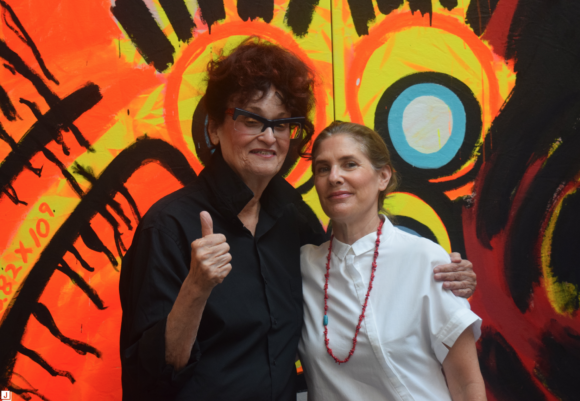
JM So is this how you get your rage out?
JB That’s exactly right. It’s funny, a curator came to my studio and said you know this is great because you actually have a way to get the rage out where all of us don’t know what to do.
JM I go on Twitter.
JB Exactly, but the rage I have is so intense I was very lucky to get the show at Paul Kasmin because a lot of dealers have collectors who voted for Donald Trump and they didn’t want to show in this political mood and worry about who’s going to collect it and all kinds of things. It was very difficult for me but Paul Kasmin rose to the occasion and it worked out quite fabulous by the way and I’m thrilled for the show I had. It was great because it was under black light and he’s so surreal it’s like you’re in another universe and it’s perfect to have the black light and sometimes the light would come in, you had some ambient light so you see the oil paint that’s on it too and as the day goes on the florescent just comes right in your face, alternate universe which we’re in at this point, wow what a trajectory.
JM So you have exciting things coming up.
JB Oh yes, I’m still an optimist, though it’s not always easy right now. I found it very difficult for me to deal with the issue of Donald Trump for a longer period of time, it got me very depressed because I would listen to the news at night and or read the paper at night and it made me very sad. It’s not just depression, I had so much anger it was keeping me up at night frankly. I was glad to move on, of course I’m moving on to Death of the Universe so I don’t know but nevertheless you see how things evolve. I feel that for me I have to deal with inequities, my work is autobiographical and that’s what I’m about and the connection between the political and the sexual, from Vietnam to the screw drawings to signature pieces to Birth of the Universe to anti Trump to now Death of the Universe, birth and death of the universe, it’s been that trajectory, what’s wonderful now is I’m able to do work and show it right away. As opposed to, there was a time period, for 25 years where I didn’t have a one-person show. That was a killer for me, it was really a killer and I was very depressed over that. I was included in some of the big shows for women artists but I was never really embraced by women artists either because they felt at the time, there idea of feminism was very narrow. It was like if it wasn’t self referential it wasn’t feminist so that has changed which is great but my idea of feminism is observing the men, their behavior and I was also observing women and their rage and I was also observing myself with the big signatures and all that so I don’t leave myself out of the big picture either. But I feel, we’ll see what happens.
JM Well you’ve always been ahead of the curve.
JB I’m ahead of the curve and I’ll still be ahead of the curve but let’s see if the world catches up.
JM Well I’m glad the world has your art to ponder at this moment.
JB Me too, me too.
JM Alright I have one question, this is what I ask everybody at the end of the interview. What do you think is the most important human quality?
JB I think resiliency. I think that it’s extraordinary how resilient humans are it’s just extraordinary. You have people that survived Auschwitz, you have people who went through so much, lost limbs, have all kinds of physical problems, so many things happen to them and many bounce back, not everyone by the way, but nevertheless I think the resiliency is what is so extraordinary about the human condition, that we are able to bounce back, that is our legacy and that is our strength.
JM That’s a great answer.
JB I haven’t thought of that till you mentioned it.
